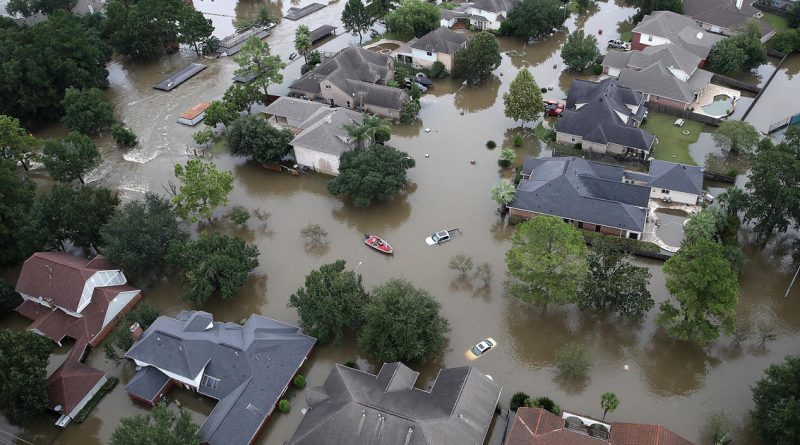Disaster as Flood displaces more than 1million persons in Borno
The governor of Borno State announced that approximately 1 million individuals have been impacted by the recent flooding that devastated the region on Tuesday. The flooding was caused by the Alau Dam which overflowed due to heavy rainfall in the State. The Alau Dam is situated in the Alau community of Konduga local government area of Borno State in the Northeast region of Nigeria, constructed in 1984–1986. It impounds a major reservoir on the Ngadda River, one of the tributaries of the Lake Chad
During a press briefing while distributing cash and prepared meals to those displaced and seeking refuge at the Bukassi camp in Maiduguri, the governor revealed that he had received a flood intervention fund of N3 billion from the Federal Government. This funding is intended to address the challenges faced by the flood-affected population.
In response to inquiries regarding the flood’s origins, the governor indicated that the situation was exacerbated by climate change, which has led to the heavy rainfall experienced this season. He noted that the flooding overwhelmed the Alau Dam, resulting in overflow into the city, along with significant water discharge from other dams located in Cameroon.
Zulum assured the public that plans are in place to reconstruct and retrofit the Alau Dam to enhance its capacity, and that illegal structures situated along waterways and in flood-prone areas will be removed.
“As of now, we are yet to ascertain the extent of damage, but about one fourth of the entire Maiduguri is flooded with water. “The population affected is up to 1 million, what we are doing this morning is to provide immediate succor, which is good and non food items,” Data would collated of affected persons, immediately,” he added
According to the National Emergency Management Agency, approximately seventy percent of Maiduguri, the capital of Borno State, has been inundated by rapidly advancing floodwaters. The deluge has also severely impacted other significant areas within the city, including the residence of the Shehu of Borno, Umar Ibn Garbai El-Kanemi, as well as the state secretariat, post office, cemetery, Lagos Area, Bulabulin, Gwange, Monday Market, University of Maiduguri Teaching Hospital, and Kofar Shehu.
“Homes are submerged, schools shut down & businesses crippled as people evacuate with their belongings,” UNCHR Nigeria stated on its X handle.
The spokesperson for NEMA indicated that the flat geological features of Borno facilitated the flow of water into the passage areas of Maiduguri city, noting that the flooding commenced after the Alau Dam overflowed due to significant rainfall.
Public infrastructure, including the Shehu’s Palace, the University of Maiduguri Teaching Hospital, and Sanda Kyarimi Park Zoo, experienced substantial inundation as a result of the flood.
Additionally, a prison wall in the Custom area was breached by the floodwaters, leading to reports of some inmates drowning while others managed to escape. Major thoroughfares in the state capital, such as the Post-Office Roundabout, which connects key locations, have also been flooded, disrupting vehicular traffic throughout the metropolis.
The Sanda Kyarimi Zoo Park, known for its popularity, was similarly affected by the flooding. The zoo’s General Manager, Ali Abatcha, reported that approximately 80% of the animals have perished due to the flood, with the remaining animals fleeing into the city. Thousands of residents residing near waterways and in flood-prone regions have been displaced, with a significant number being women and children.
Alau Dam Collapse and Borno Flooding: Whose Fault?
The Renevlyn Development Initiative (RDI) has attributed the failure of the Alau Dam in Borno State, along with the devastation of agricultural lands and the destruction of numerous homes in Maiduguri, the state capital, to a significant lack of coordination among the emergency response agencies at both federal and state levels. This assertion from RDI follows the dam’s collapse on Tuesday, September 10, which resulted in flooding that affected 70 percent of Maiduguri.
The flooding in the affected communities reportedly commenced approximately one week prior but escalated dramatically in the early hours of Tuesday, displacing residents from areas such as Fori, Galtimari, Gwange, Bulabulin, and others.
In the wake of this disaster, thousands of residences have been inundated, including the palace of the Shehu of Borno and various government buildings in the capital. Additionally, there has been a jailbreak and the escape of animals from the Museum Park, further jeopardizing the safety of the residents. Reports indicate that 80 percent of the animals at the Sanda Kyarimi Park Zoo perished due to the flooding.
Philip Jakpor, the Executive Director of RDI, stated in an interview with Leadership newspaper, that the dam’s collapse was entirely preventable, emphasizing that this incident reflects a failure in governance across all levels. He noted that both the Nigeria Meteorological Agency (NIMET) and the Nigeria Hydrological Services Agency (NIHSA) had previously predicted the floods, yet no effective preemptive measures or flood management strategies were implemented to protect lives and property.




